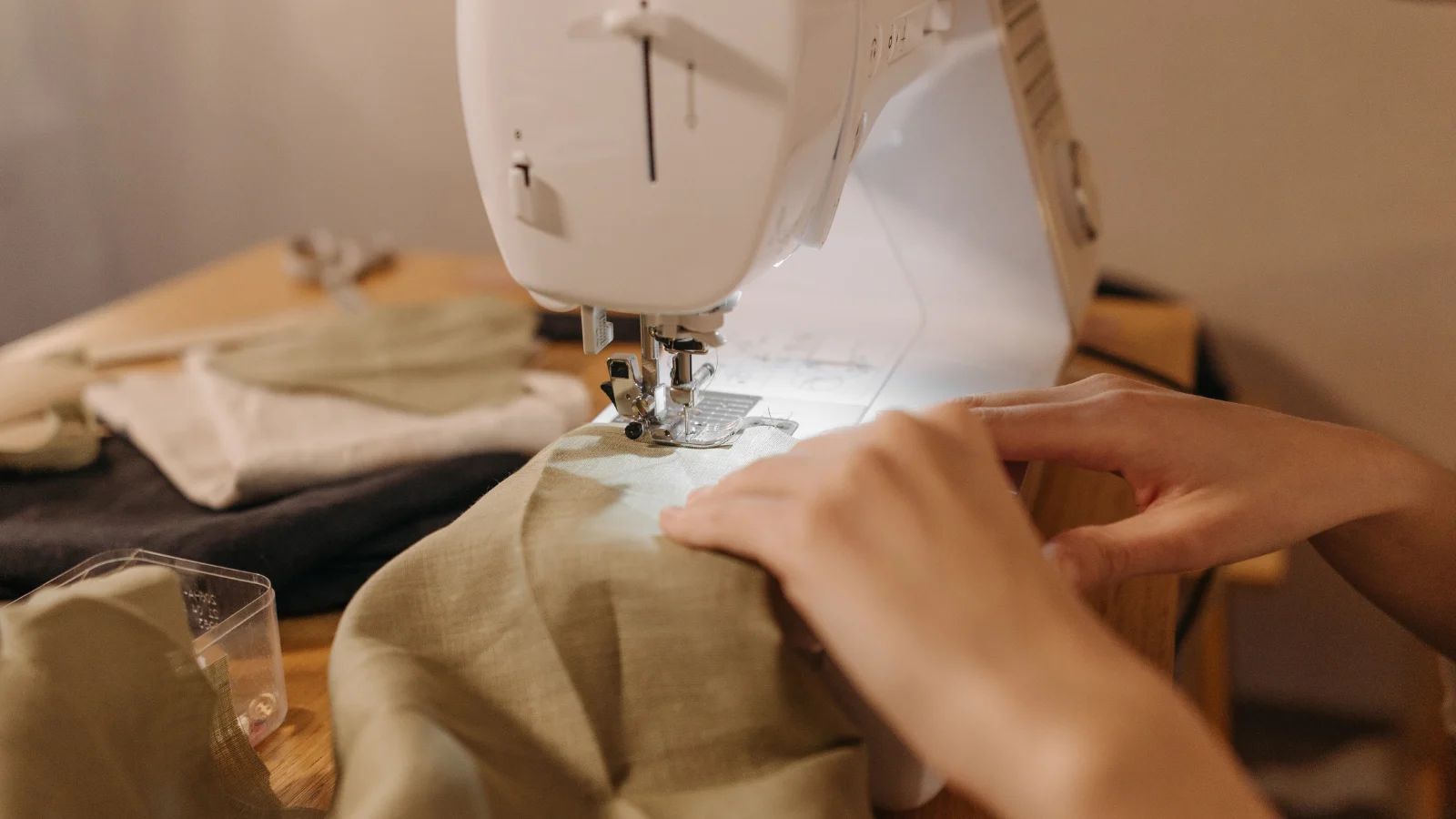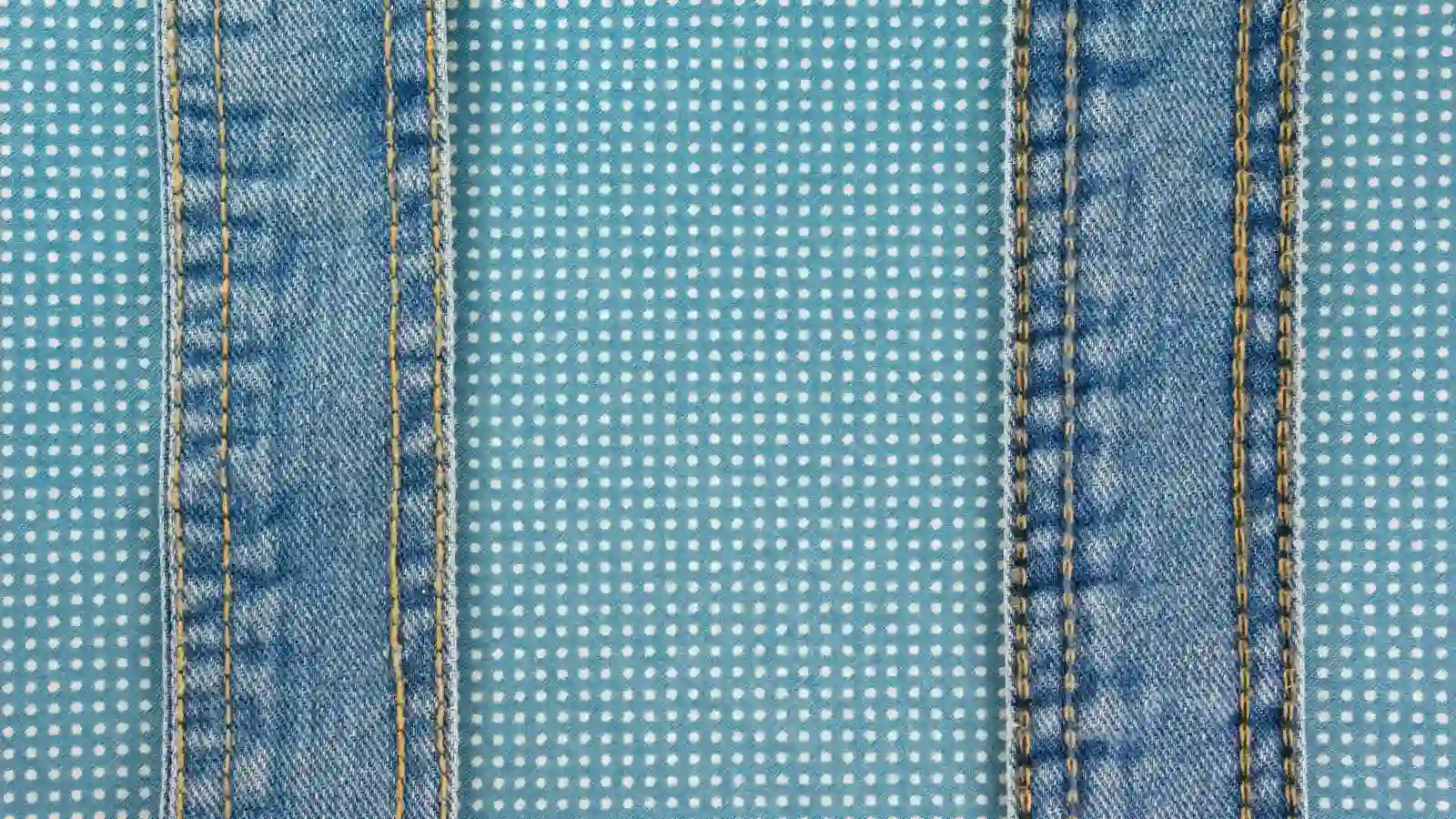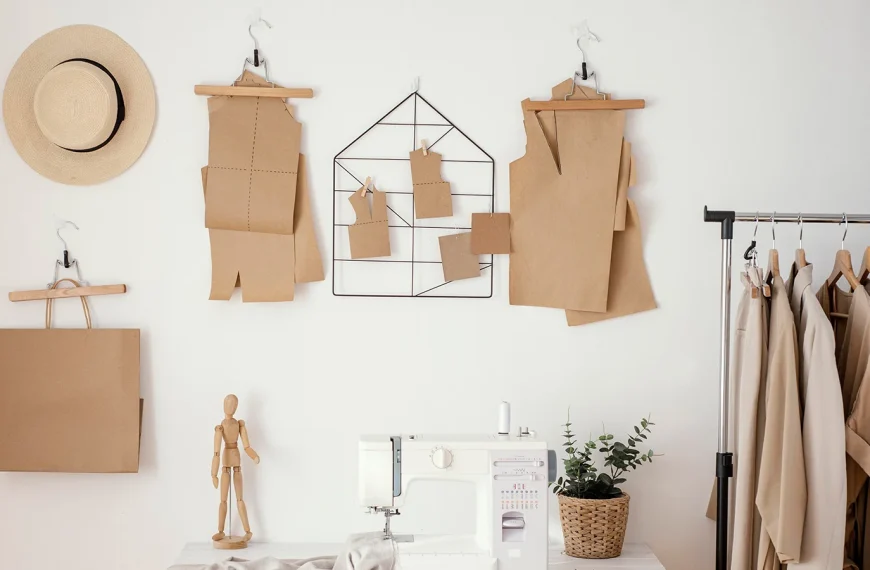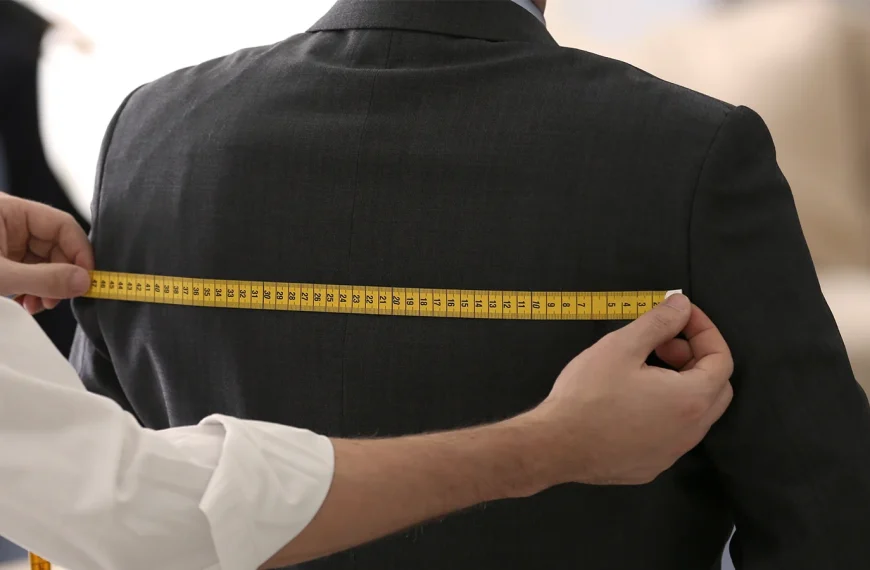Let’s say you’ve decided to make canvas bags. Using a sewing machine for canvas can be more challenging than expected. The fabric’s toughness, while ideal for a tote bag’s durability, can be challenging to handle.
So how do you tackle sewing canvas without damaging your machine or ending up with a less-than-perfect product? The trick lies in understanding the right techniques and precautions to take. It’s time to uncover the secrets of successfully sewing canvas. Now the following guide can help you learn how to sew canvas using a regular sewing machine.
Key Takeaways
- Canvas is a distinct type of fabric, separate from cotton fabric. Canvas is a thick fabric that you need to sew through multiple layers.
- Choose a heavy-duty needle and durable thread, like polyester, for successful canvas sewing.
- To handle thick canvas, use tools such as a walking foot or a sewing awl. Additionally, use a metal thimble to protect your fingers.
- Before sewing, test the thread tension on scrap canvas for a smooth sewing experience. Make necessary adjustments to home sewing machine settings to accommodate thick fabric.
- Store canvas fabric rolled on a cardboard tube or bolt in a cool, dry place to maintain its quality.
Sew Canvas with Basic Sewing Machine
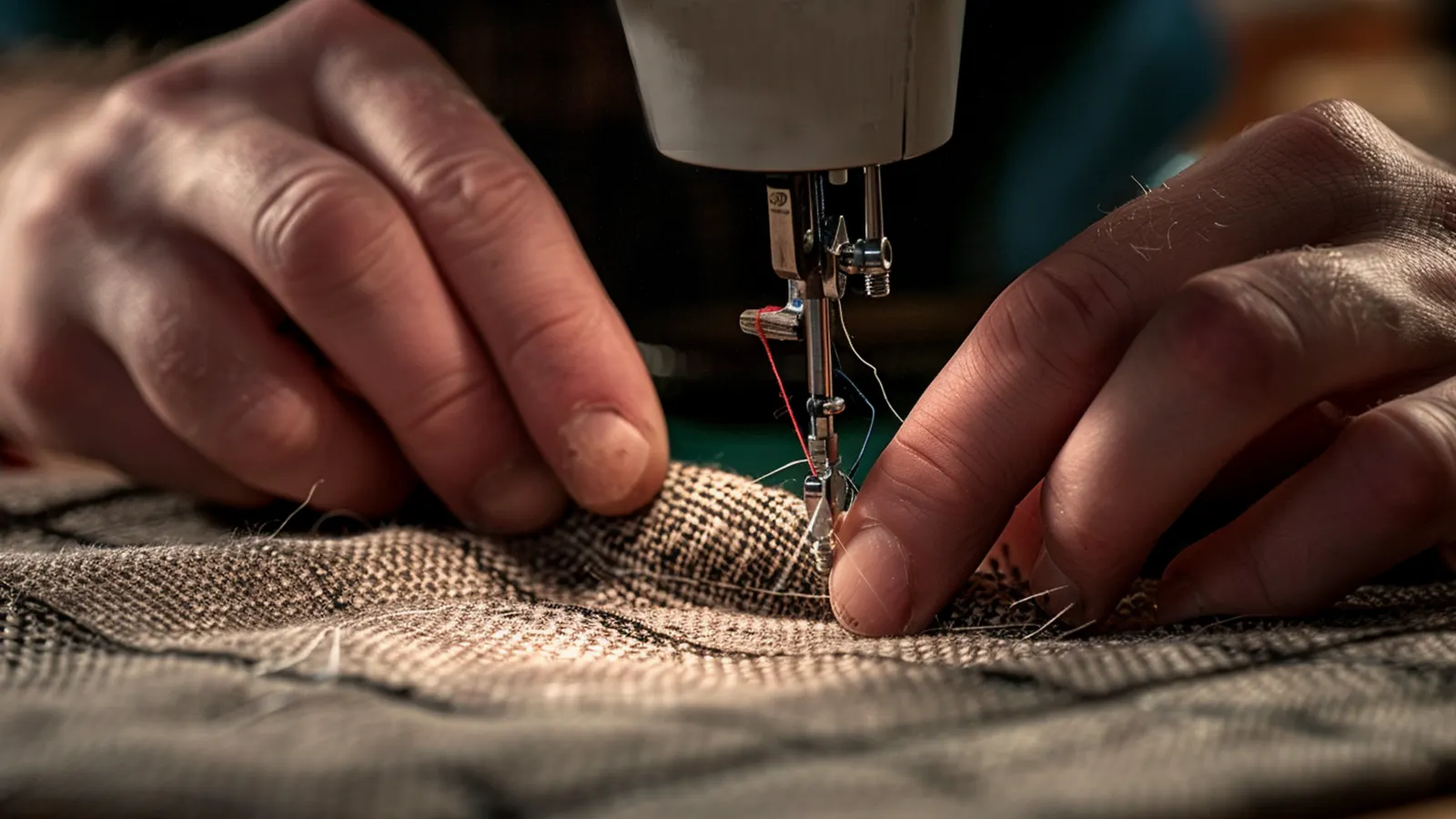
When sewing canvas with a basic sewing machine, it’s crucial to prepare correctly. Start by securing your canvas with clips or double-sided tape. Opt for a heavy-duty needle and thread that can withstand the fabric’s weight. Don’t forget to adjust your machine’s settings, especially the stitch length. You should consider using a walking foot to ensure an even feed of the thick canvas layers. There are some tips and tweaks you need to know.
Use Clips or Double-sided Tape to Secure Canvas
Before sewing canvas on your basic machine, it’s important to secure the canvas fabric with clips and double stick tape to keep it from moving or bunching up. This is of particular importance when managing multiple layers of canvas.
Here’s how to do it right:
- Start by aligning your fabric and identifying the areas that need securing.
- Apply the clips to the edges of the canvas, ensuring they’re spaced evenly for maximum stability.
- If you opt for double-sided tape, apply it along the seam lines, not forgetting to remove it before sewing.
- Regularly check and adjust the clips or tape as you progress with your sewing to ensure the canvas stays put.
Now using double-sided tapes instead of standard sewing pins. Securing your canvas with clips or tape helps to sew smoothly without interruptions, resulting in a polished look.
Choose Heavy-duty Thread and Needle for Sewing Machine
Having secured your canvas with clips or tape, you’ll now want to focus on selecting the right tools for the job. It is difficult to push sewing pins into multiple layers of canvas fabric. So use a size 40 heavy-duty thread and a denim-labeled needle to sew canvas on a basic machine. This thread is specifically designed for sewing canvas and other heavy fabrics outdoors. It can handle the tension that comes with sewing these materials. Polyester thread is recommended for its durability and to prevent fraying on cotton threads. Remember, you need to use these needles and threads when you start sewing thick canvas.
Set Up the Best Stitch Length for Sewing Canvas
Extending your stitch length is necessary when you sew canvas. Set the stitch length on your sewing machine between 3.5 to 4 mm for durable and attractive canvas projects. This longer stitch length is ideal for thick canvas fabric. It helps prevent puckering and ensures a smoother sewing experience.
Here are some key points to remember:
- Experiment with different stitch lengths on scrap canvas before starting your project. This helps you find the optimal setting for your sewing machine.
- Pay attention to the sewing machine settings. A longer stitch length is typically better for canvas projects.
- Always use an upholstery thread, as it’s stronger and can handle the robust canvas material.
Adjust Sewing Machine Settings
Once you’ve picked the right stitch length for your canvas project, adjust your sewing machine settings to match the strong fabric. Use a larger needle size like 90/14 or 100/16 for canvas to ensure effective penetration due to its thickness. Adjust your bobbin tension dial to a higher number to balance the thickness of the canvas for uniform stitches. Remember, the right needle – usually a denim or heavy-duty one – is critical to avoid breakage.
Using a Walking Foot
When sewing canvas with a basic sewing machine, using a walking foot attachment can make a big difference. It helps the thick fabric feed through the machine evenly and smoothly. This invaluable tool serves several functions:
- It helps to feed thick canvas fabric through your machine with ease.
- It prevents the shifting and puckering of layers, ensuring neat, consistent stitching.
- The walking foot features built-in feed dogs that work in unison with your machine’s feed dogs for seamless fabric movement.
- It’s essential for achieving professional-looking results when sewing heavy materials like canvas.
Canvas is such a thick fabric that it is difficult to sew. The walking foot attachment makes your task easier and improves the final look of your project. It prevents fabric from slipping and helps create even stitches.
Test Before Starting
Test with a scrap piece of fabric first. This allows you to fine-tune machine settings such as tension and stitch length. Use a denim needle, designed for heavy fabrics, to effectively sew canvas by hand or machine.
Before moving on to your canvas, it’s a good idea to practice sewing straight lines and corners on these fabric scraps. This practice sewing helps familiarize you with the unique sound and feel of your machine when working with canvas. A dress rehearsal is like a practice for the main event and helps avoid problems later on. It’s a small step, but a crucial one in ensuring a successful canvas sewing project.
Sew Canvas by Hand
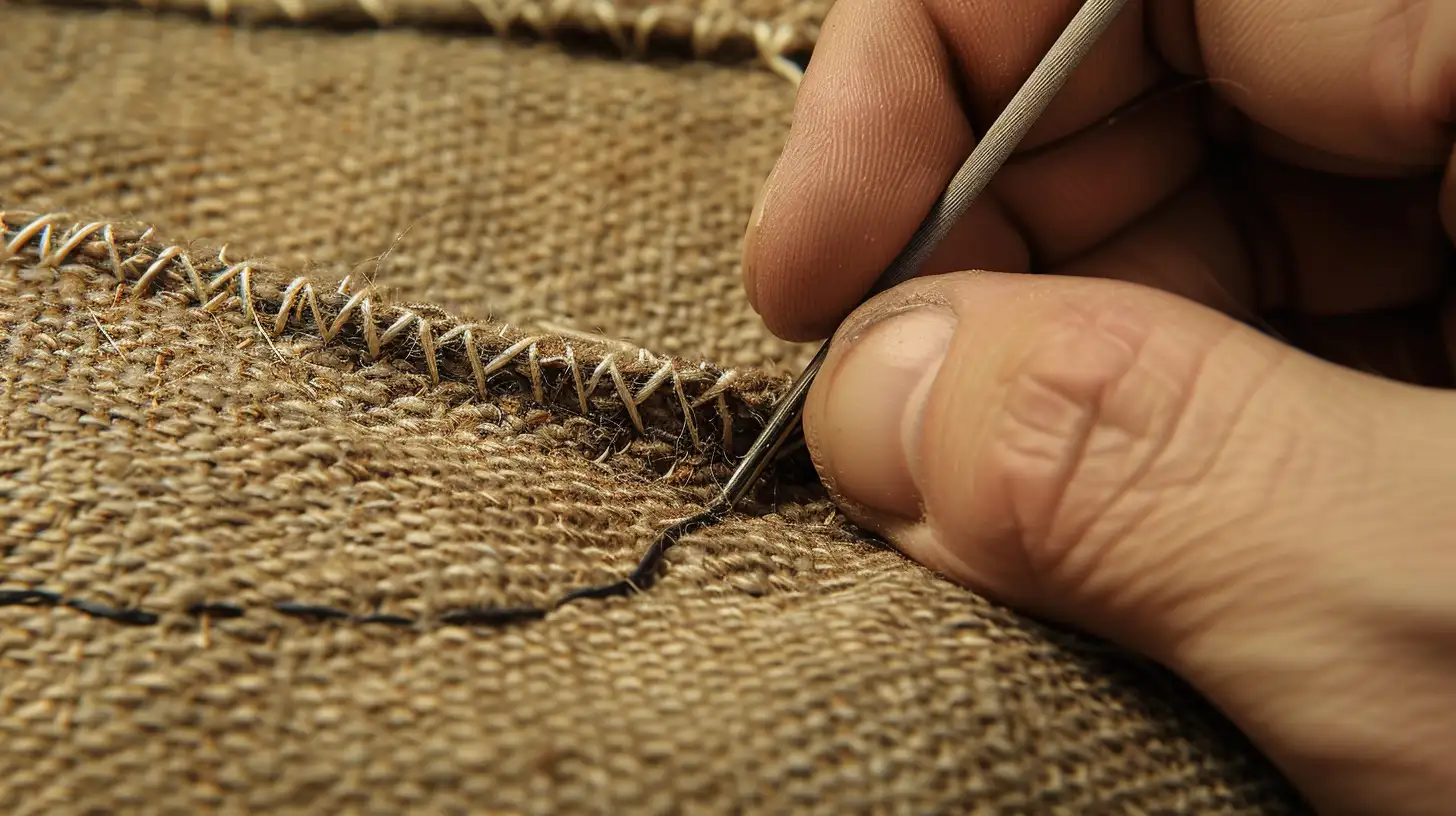
You’ll need to pick a sturdy sewing thread and needle, ensuring their toughness to handle the demands of canvas fabric. Opt for a round stitch when a seam is needed – it’s a reliable choice for canvas work. Use a handheld awl to make stitching easier. It creates holes and guides the thread through when you sew by hand.
Choose Sturdy Sewing Thread and Needle
When hand-sewing canvas, using a size 40 heavy-duty thread and sturdy sail needles can make your stitches much stronger. Avoid using regular threads. Keep in mind that sturdy tools are required for handling heavy fabrics such as canvas. Using a sewing awl can make your job easier.
To help you out, here are some key points to remember:
- Upholstery hand thread is an excellent choice when dealing with canvas. It’s strong enough to withstand the fabric’s robust nature.
- Sail needles are designed to handle thick fabrics like canvas. Their strength ensures your stitches won’t break.
- Use clips and double stick tape to secure your canvas before sewing.
Opt for Round Stitch When Requiring a Seam
Having chosen the right heavy-duty thread and needle, it’s time to tackle the right stitching technique for your canvas project.
Opt for a round stitch when a seam is required. This basic, yet strong and secure stitch is perfect when sewing canvas by hand. Not only does it provide durability and strength, but it also ensures a professional finish that prevents fraying.
When joining pieces of canvas together, a round stitch is your best bet. The process involves pushing a sewing needle through layers of canvas to create a loop of thread that is then pulled tight. Remember, this stitch helps to withstand heavy-duty use, making it ideal for your hand sewing projects.
Use a Handheld Awl for Easier Canvas Sewing
When working on a canvas project manually, using a handheld awl is very helpful. It makes creating holes in tough canvas fabric easy, which in turn makes stitching easier. This simple, yet powerful tool is a game-changer for sewing by hand, particularly with canvas.
Here’s why you should consider using an awl:
- It guides the needle through the canvas without bending or breaking.
- You can use it to mark stitch points for precise stitches.
- It creates perfect perforations for rivets or eyelets.
- It allows for accurate piercing of canvas layers for secure stitching.
Use a Metal Thimble When Sewing
Use a metal thimble for sewing on canvas. It protects your fingers and helps you push needles through multiple fabric layers easily and without pain or harm.
When hand-sewing thick canvas, it’s crucial to protect your fingers from the sharp needle. A metal thimble fits well on your finger, giving you control and precision for sewing. Metal thimbles can handle pressure when sewing heavy materials, keeping your fingers safe unlike plastic or leather ones. So you’ll maintain a consistent stitching rhythm, resulting in efficient and precise results.
How to Store Canvas Fabric
 To keep your canvas fabric in good condition and make it last longer, it’s important to store it properly. After sewing, it’s important to store canvas fabric correctly to prevent creases and prolong its lifespan.
To keep your canvas fabric in good condition and make it last longer, it’s important to store it properly. After sewing, it’s important to store canvas fabric correctly to prevent creases and prolong its lifespan.
Here are a few steps to help ensure your canvas fabric stays in top condition:
- Always roll your canvas fabric on a cardboard tube or bolt; it helps to prevent creases.
- Avoid folding canvas fabric, which can lead to permanent creases.
- Store your canvas fabric in a cool, dry place. Sunlight can cause fading or discoloration.
- A breathable fabric storage bag or cotton sheet can protect your canvas from dust and dirt.
Conclusion
You’ve done it! You’ve mastered the art of sewing canvas. You can easily make a canvas pillow or a market tote bag. Whether by hand or machine, you’ve tackled each stitch with precision. Now, you know how to prepare, sew, and store canvas fabric like a pro.
Don’t stop here. Continue honing your skills, exploring more complex projects. Remember, troubleshooting is part of the journey. With each hurdle, you’re not just crafting canvas, you’re crafting expertise.
Keep sewing, keep learning, and keep creating. You got this!
Learn more sewing tips on Longan Craft Blog! Dive into the fabric world with Longancraft!

